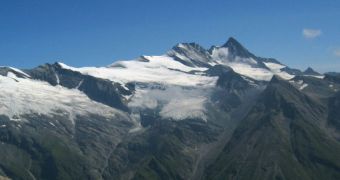New scientific surveys have discovered that underneath Antarctica's massive ice sheet there is also a mountain chain comparable in size to the Alps. This new information could easily help scientists develop new maps for the region's floor configuration, and could lead in the future to a better understanding of how the ice is influenced from underneath. This is very important, because if only a fraction of this ice melted, then global sea levels would go up, threatening hundreds of millions.
On Tuesday, the science team announced that it used radar and gravity sensors for its new study, which comes to confirm discoveries made by Russian experts some 50 years ago. At the time, they were the first to predict that the Gamburtsev region, located in Eastern Antarctica, housed impressive mountains. The new expedition has managed to take that a step further, by creating a detailed map of the entire buried mountain range.
“The surprising thing was that not only is this mountain range the size of the Alps, but it looks quite similar to the Alps, with high peaks and valleys,” British Antarctic Survey (BAS) geophysicist Fausto Ferraccioli told Reuters in an interview. He added that this discovery was of paramount importance in understanding how Antarctica came to be covered in ice. According to the researcher, the fact that the mountains underneath were not completely flat was evidence of the fact that the ice formed quickly.
If the sheets had grown steadily for millions of years, then erosion at their base would have consumed the mountain until it became nothing more than a flat surface. But still it exhibits high peaks and valleys, which seem to hint at the fact that a milestone event was the one that prompted the Southern Continent to be covered in approximately 4 kilometers (2.5 miles) of ice, some 35 million years ago.
“The temperatures at our camps hovered around minus 30 Celsius (minus 22 Fahrenheit), but 3 kilometers (2 miles) beneath us at the bottom of the ice sheet we saw liquid water in the valleys,” Columbia University Lamont-Doherty Earth Observatory scientist Robin Bell said in a statement. This is not a rare occurrence. Over the past few years, more and more underground lakes have been found in the Antarctic, fueling fears that global warming is getting to the ice sheets as well.
“The mystery here is that the Alps are only 50 to 60 million years old, while here we have a mountain range that may perhaps be as old as 500 million years,” Ferraccioli pointed out. The only way for mountains as impressive as these to form is through volcanic or tectonic activity, or when tectonic plates collide. But the Antarctic hasn't been subjected to such forces for 500 million years, so studying the mountains may give valuable insight into our former world.

 14 DAY TRIAL //
14 DAY TRIAL //